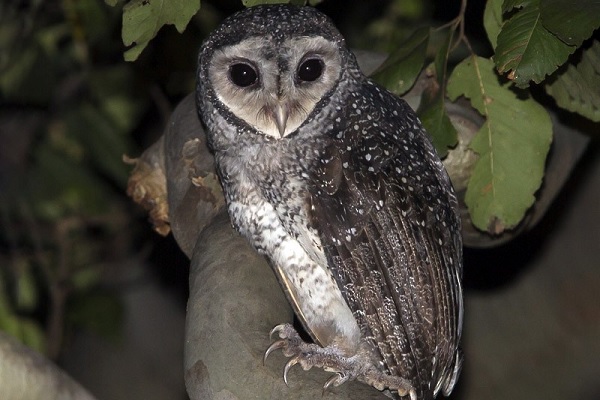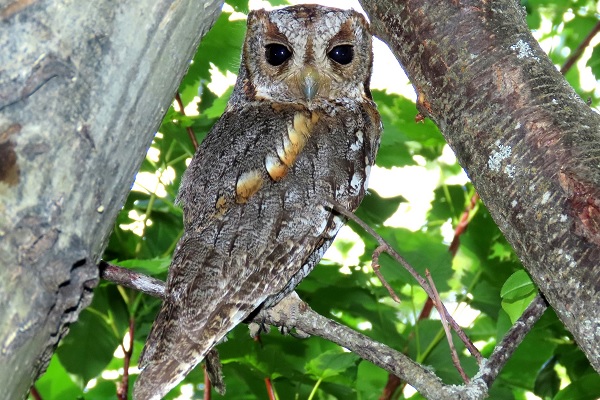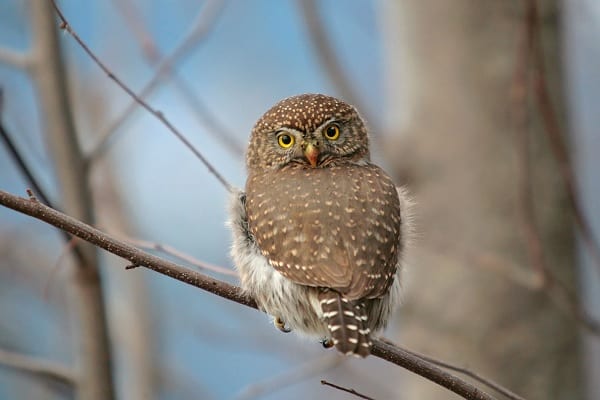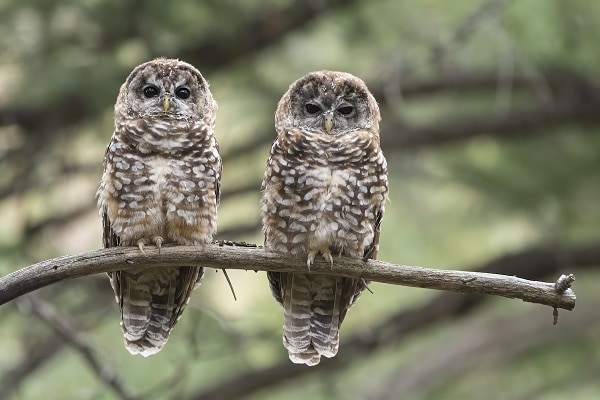Owls in Colorado are amazing creatures of the night. They live in different habitats, from mountains to plains. Colorado has many kinds of owls, such as the Great Horned Owl and the Boreal Owl. Each one has its own features and behaviors. I researched these owls and learned a lot about them. In this article, I will share with you what I found out.
Key Takeaways:
- Colorado is home to 13 species of owls.
- The Great Horned Owl is one of the most iconic owl species in Colorado.
- The Barn Owl and Western Screech-Owl are two common owl species found in Colorado.
- Colorado also hosts several lesser-known owl species.
- Conservation efforts are underway to protect Colorado’s owl populations.
Majestic Great Horned Owl
The Great Horned Owl, also known as Bubo virginianus, is one of the most iconic owl species in Colorado. With its large size, formidable presence, and striking tufted ears, this magnificent creature captivates both bird enthusiasts and nature lovers alike.

As one of the largest owl species in North America, the Great Horned Owl stands tall with an average height of 18-25 inches and a wingspan that ranges from 3.3 to 4.8 feet. Its distinctive ear tufts, which resemble horns, give this owl a regal appearance, adding to its allure. These ear tufts aren’t actually ears, but rather a unique feature that sets them apart from other owl species.
The Great Horned Owl is a master predator, silently soaring through the night skies in search of its prey. Equipped with powerful talons and keen eyesight, it hunts a wide range of prey, including small mammals, birds, and reptiles. Its adaptability to various habitats makes it a successful hunter, thriving in diverse environments such as forests, deserts, and even urban areas.
This resilient bird has a distinct hooting call, often described as ‘Who’s awake? Me tooo.’ The haunting sound of a Great Horned Owl’s hoot resonates through the night, creating an atmosphere of mystery and intrigue. These hoots serve multiple purposes, including territorial marking, communication with their mate, and establishing dominance among other owls.
Great Horned Owls are known for their ability to adapt and survive in different ecosystems. This adaptability, combined with their majestic appearance and commanding presence, makes them an awe-inspiring sight for anyone fortunate enough to encounter one in the wild.
Did you know?
The Great Horned Owl is also known by other names, such as the Tiger Owl and the Hoot Owl, perfectly describing its fierce nature and mesmerizing vocalizations.
Barn Owl

In Colorado, we are fortunate to have two common and fascinating owl species – the Barn Owl and the Western Screech-Owl. These owls contribute to our unique and diverse wildlife population.
The Barn Owl is easily recognizable with its distinctive heart-shaped face and silent flight. Its ghostly white feathers and dark eyes set against its pale face make it an enchanting sight. This owl species is an efficient hunter, relying on its exceptional hearing and keen eyesight to locate small mammals, birds, and insects. Barn Owls often nest in abandoned structures like barns, haystacks, and old buildings, hence its name.
Western Screech-Owl

On the other hand, the Western Screech-Owl is a smaller owl with delightful ear tufts, adding to its charm. Its size, usually around nine inches in length, makes it one of the smallest owl species in Colorado. With a penchant for wooded areas and urban parks, the Western Screech-Owl has adapted well to human presence. Its camouflaged plumage and ca
Lesser-Known Owl Species in Colorado

Colorado is not only home to well-known owl species like the Great Horned Owl and Barn Owl but also to several lesser-known owl species. These magnificent creatures add to the richness of Colorado’s biodiversity and offer a fascinating insight into the world of owls. Let’s explore some of these remarkable species:
Long-eared Owl
The Long-eared Owl (Asio otus) is a medium-sized owl with distinctive long ear tufts, which give it a charming and unique appearance. These owls prefer dense woodlands and coniferous forests, where they nest and hunt primarily rodents and small birds.
Short-eared Owl

The Short-eared Owl (Asio flammeus) is another owl species found in Colorado. They are known for their “facial disk,” a feature that allows them to locate prey accurately. These owls can be found in open grasslands and marshes, where they hunt small mammals.
Northern Saw-whet Owl
The Northern Saw-whet Owl (Aegolius acadicus) is a small, secretive owl species with a unique call that resembles the sound of a saw being sharpened. They are often found in dense forests, where they hunt small rodents, insects, and birds.
Flammulated Owl

The Flammulated Owl (Psiloscops flammeolus) is recognized by its small size and beautiful reddish-brown plumage. These nocturnal hunters inhabit forests with dense vegetation and feed on insects, especially moths.
Snowy Owl
The Snowy Owl (Bubo scandiacus) is truly a sight to behold with its pure white plumage. Although they typically breed in the Arctic, these majestic owls occasionally visit Colorado during the winter months, where their presence delights birdwatchers and nature enthusiasts.
Northern Pygmy Owl

The Northern Pygmy Owl (Glaucidium gnoma) is a tiny owl species found in Colorado’s high-altitude forests. Despite its small size, this owl is a skilled hunter, known for preying on small birds, mammals, and insects.
Burrowing Owl

The Burrowing Owl (Athene cunicularia) is a unique owl species that nest underground in burrows created by other animals. They can be found in open grasslands and prairies and feed primarily on insects and small vertebrates.
Mexican Spotted Owl

The Mexican Spotted Owl (Strix occidentalis lucida) is a striking owl species characterized by its dark feathers adorned with white spots. These owls prefer ponderosa pine forests and are known for their diet of small mammals, birds, and reptiles.
Boreal Owl

The Boreal Owl (Aegolius funereus) is a small owl species that inhabits mature coniferous forests. With its beautiful brown plumage and yellow eyes, this owl is a captivating sight. It feeds primarily on small rodents and birds.
These lesser-known owl species contribute to the ecological diversity of Colorado, each occupying specific habitats and playing a vital role in the local ecosystems.
Explore Owl Species in Different Regions
Conservation Efforts for Colorado’s Owls
Conserving owl populations in Colorado is a top priority for us. As these majestic creatures face various threats, such as habitat loss and the impacts of climate change, we must take action to protect them and ensure their survival for future generations.
One of the key aspects of owl conservation in Colorado is preserving their habitats. We work closely with landowners, government agencies, and conservation organizations to identify and protect critical owl habitats. By implementing sustainable land management practices and advocating for the preservation of natural areas, we aim to create safe spaces for owls to thrive.
In addition to habitat preservation, raising awareness about the importance of owl conservation is fundamental. We actively engage in educational initiatives, organizing workshops and outreach programs to inform communities about the crucial role that owls play in maintaining the balance of our ecosystem. Through these efforts, we hope to foster a greater appreciation for these fascinating creatures and inspire others to join us in protecting their future.
Our commitment to owl conservation goes beyond these efforts. We also collaborate with researchers and scientists to gather valuable data on owl populations and monitor their well-being. By studying their behaviors, migration patterns, and breeding habits, we can develop effective conservation strategies tailored to the specific needs of each owl species.
FAQs About Owls In Colorado
Q1: What is the most common owl in Colorado?
The Great Horned Owl is one of the most common owl species in Colorado, along with the Western Screech Owl and Barred Owl.
Q2: Where can I see owls in Colorado?
Owls can be observed in various habitats across Colorado, including forests, parks, and open spaces. Popular locations include Rocky Mountain National Park and Chatfield State Park.
Q3: Are owls protected in Colorado?
Yes, owls are protected in Colorado, and they are covered by state and federal conservation regulations.
Q4: Does Colorado have barn owls?
Yes, barn owls are found in Colorado. They inhabit a variety of environments, including farmlands, grasslands, and rural areas.
Q5: What is the rarest owl to see?
The Madagascar Red Owl is considered one of the rarest owl species globally.
Q6: What is the most aggressive owl species?
The Northern Hawk Owl is often considered one of the most aggressive owl species, known for its bold and fearless behavior, especially during the breeding season
